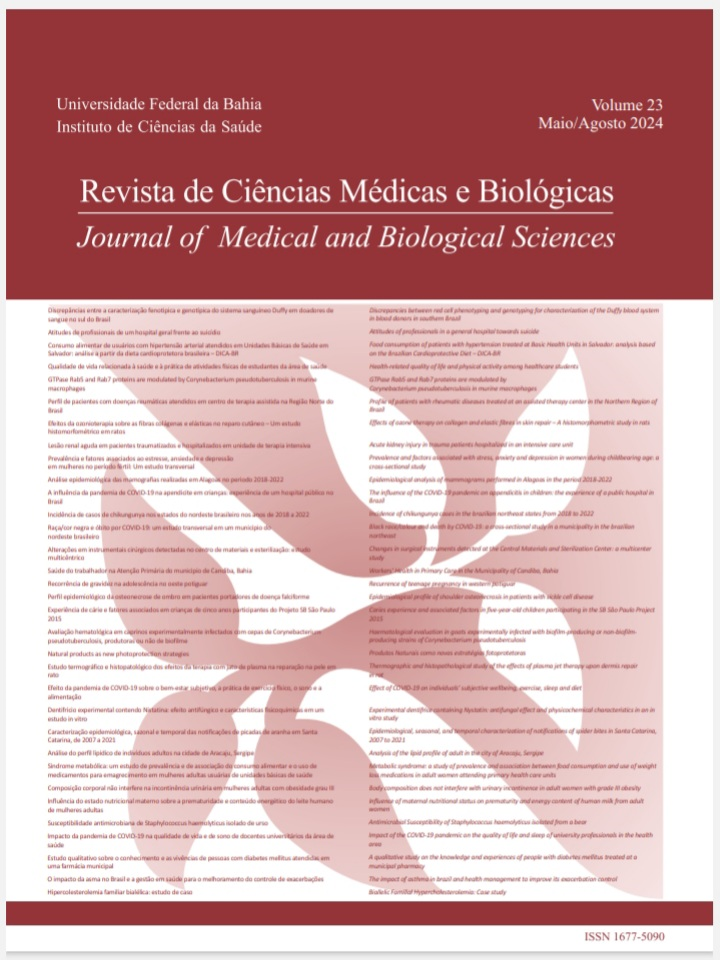Dentifrícios experimental contendo nistatina: efeito antifúngico e características fisicoquímicas
DOI:
https://doi.org/10.9771/cmbio.v23i2.57511Keywords:
Antifungal Agents, Toothpastes, NystatinAbstract
Introduction: Oral candidiasis is one of the most frequent opportunistic infections of the oral cavity, represented by the excessive growth of Candida albicans, followed by Candida glabrata. The treatment protocol involves antifungal therapy and oral hygiene. Toothpaste is a product of routine use in the dental clinic and in the life of the population, increasing mechanical hygiene and being a vehicle for antifungal agents. Among these, nystatin (NIS) in oral suspension stands out due to its clinical efficacy and reduced adverse effect. Objective: To develop and evaluate dentifrice containing nystatin. Method: A experimental dentifrice was developed from a base formulation by adding nystatin in three concentrations. Antifungal activity was evaluated by Minimum Inhibitory Concentration (MIC) and agar diffusion test. The physical properties of the dentifrice were evaluated. Data were presented as a mean and the ANOVA test was applied. Results: The MIC value of nystatin was 0.05 ± 0.017 µg/mL. The antifungal activity presented values of 17.3 ± 3.93 mm, 20.40 ± 8.08 mm and 20.20 ± 3.34 mm, for D1, D2 and D3, respectively (p>0.05). All formulations showed foaming capacity, however D1 showed higher foaming capacity (18.7%). The three formulations showed a spreading capacity of approximately 7 cm. The formulations showed cleaning capacity similar to the negative control. Conclusion: The toothpastes showed antifungal activity against C. albicans and exhibited satisfactory physical properties, with no negative influence by the incorporation of nystatin.
Downloads
Downloads
Published
How to Cite
Issue
Section
License
Copyright (c) 2024 Journal of Medical and Biological Sciences

This work is licensed under a Creative Commons Attribution 4.0 International License.
The Journal of Medical and Biological Sciences reserves all copyrights of published works, including translations, allowing, however, their subsequent reproduction as transcription, with proper citation of source, through the Creative Commons license. The periodical has free and free access.


